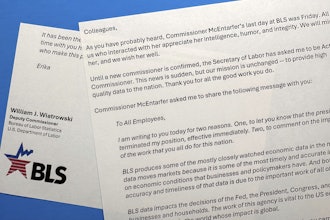Depending on the source, statistics show that in the coming years the number of unfulfilled jobs in the manufacturing industry will be anywhere between 300,000 and 2 million. The Baby Boomers who have been the backbone of the workforce for decades are retiring and the Millennials are not prepared (or frankly, interested) to fill the gaps.
What can be done?
Manufacturers have two choices.
They can see this shift as an insurmountable challenge or an incredible opportunity to usher in a new era for the industry. Business sense demands the industry and its stakeholders embrace an optimistic, forward-looking approach.
Let’s take look at some of the opportunities associated with the manufacturing skills gap:
1. Recruit and Develop Talent
To build a bridge requires careful engineering and extensive plans to be sure it’s done correctly. Bridging the skills gap in the manufacturing industry is no different. A framework needs to be in place in order to meet the needs and goals of companies and industry.
Ask these kinds of thought-provoking and planning questions: What qualities are we looking for in an employee? What skills will an employee need? What resources need to be in place to help new workers grow and succeed (training, support programs, etc.)? What will we want the future of our workforce to look like? This is the perfect opportunity to ask these questions.
The next step is to work backwards: What can my company and the industry as a whole do to cultivate a workforce with these skills and qualities? Work within existing structures and organizations — community organizations, vocational schools, and college programs, for example — to share the benefits of a manufacturing career and develop potential employees.
Internship programs for high school and college students are a great way for companies to get to know a prospective employee and for young talent to get a real world glimpse into the industry. Through these types of outreach and communication efforts, manufacturers can begin to develop a talent pipeline.
2. Share Skills and Knowledge
With the right approach from leadership — one that encourages open communication, an exchange of ideas, and forward-looking collaboration — an alliance can be fostered in a multi-generational workplace.
The highly-skilled and experienced Baby Boomers can impart their extensive knowledge onto the Millennials. On the other hand, the tech-savvy Millennials can share their skill set as well.
To foster this type of exchange, manufacturers could consider a formalized mentoring program where there can be a space for exchange of information and knowledge. One of the generational traits of Millennials is the need and desire to improve through feedback from leadership. They also value having a voice and to know they are contributing to the greater good within the workplace and beyond.
A mentorship program is an avenue where the needs of both generations are met, as well as the broader needs of the industry looking for skilled workers.
3.Find Efficiency in Automation
Running on a parallel track to developing a new generation of talent is to incorporate automation into manufacturing processes.
“How do you replace the older generation of skilled workers? You replace them with automation. Automation is going to fill the voids, fill the gaps by making processes more efficient,” says Ed Romaine, Vice President of Sales & Marketing, SI Systems.
With more people retiring than there are skilled workers to take their place, many manufacturers have little choice but to find technology-driven ways to keep up with production and grow their business.
Leveraging automated technologies — everything from conveyor systems to material handling systems — will help manufacturers in the short- and long-term. The upside of increased automation is it is also an exercise in finding efficiency and cost-savings.
4. Increase Technology (Robotics and Other Innovations)
The skills gap is also an opportunity for investment in new innovations in the realm of robotics and other high-tech machines. Manufacturing could play a vital role in the development of state-of-the-art technologies that could have applications in other industries as well.
“As they say, necessity is the mother of all inventions. There’s some pretty smart people who will figure out there is a better way, a more automated way, to get the work done at a fraction of the cost,” says Sean Mulikin, Regional Accounts Manager from Aleco.
While automation could mean a loss of jobs, there is also a potential opportunity for a new segment of jobs for a specialized skill set. For example, skilled workers who can maintain and repair these high-tech machines will be in high demand in the coming years.
5. Diversity in the Workforce
Changing demographics are bringing more diversity into the workforce. Not only in age, but also to nationality, gender, sexual preference, and cultural background. With straightforward and relatively simple techniques, like making machines multilingual or diversity training, manufacturing can prepare for a more diverse workforce.
There’s more manufacturers can do to create a welcoming environment for all workers. Industry Week recently highlighted Nissan’s efforts to create a more inclusive environment, which includes “business synergy teams” focused on encouraging more cross-cultural understanding between employees.
Jeffrey Webster, Nissan’s director of diversity and inclusion, told Industry Week that embracing diversity pays off not only in creating a corporate culture of inclusion, but goes a long way toward achieving business goals as well.
“If people feel that they can come to work and not feel that their differences are being put to the side, then they are more apt to talk to people about Nissan, encourage people to come work at Nissan, and are more likely to stay at Nissan,” Webster told Industry Week.
Final Thoughts
The manufacturing industry is in the midst of a huge shift — no doubt about that — but in so many ways it’s an opportunity for companies and their leaders to think outside the box. While the reality of the skills gap is here, there are boundless opportunities to address the problem and begin building the workforce of the future.
Scott Stone is the Director of Marketing for Cisco-Eagle, Inc.























